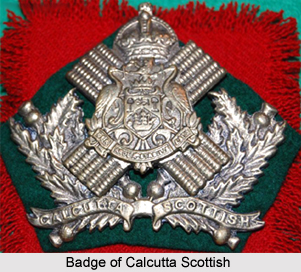 The Calcutta Scottish regiment was former infantry unit that was raised by the British Indian Army in 1914. The regiment mostly consisted of Scottish volunteers. It was included as a part of the army reserves in Auxiliary Force, India (AFI). After the nation achieved independence in 1947, the Calcutta Scottish regiment was dissolved.
The Calcutta Scottish regiment was former infantry unit that was raised by the British Indian Army in 1914. The regiment mostly consisted of Scottish volunteers. It was included as a part of the army reserves in Auxiliary Force, India (AFI). After the nation achieved independence in 1947, the Calcutta Scottish regiment was dissolved.
History of Calcutta Scottish
Initially in 1911, the British Indian Army attempted to form 2 kilted companies of Calcutta Scottish as a part of the Calcutta Rifles regiment, but without success. Eventually on 1 August 1914, the army of British India raised the Calcutta Scottish Volunteers as part of the Indian Volunteer Force. Later the regiment was re-structured and re-designated as the 44th Calcutta Scottish regiment. The military unit was later renamed as The Calcutta Scottish (Army Auxiliary Force, India) on 1 October 1920. Later it included Light Motor Patrol armed with Maxim guns in 1921
.
The troops of the Calcutta Scottish regiment were joined with the Calcutta Volunteer Machine Guns and served in few British battles. The Calcutta Scottish was inspected by the Prince of Wales in 1928. The British Indian regiment was sent as aid to the Civil Power in 1930. During this period, small units of the Calcutta Scottish were deployed on eighteen operations. The troops also served during the Second World War. In 1942, it took part in the Operation Creek against Axis shipping in Goa.
The Calcutta Scottish (Army Auxiliary Force, India) was reformed in 1946. It was modified to include a headquarters, two companies and four Motor platoons. Several units of the British Indian Army were disbanded after the Indian independence and the Partition of India on 15th August 1947. As a result, The Calcutta Scottish regiment was also dissolved in 1947.
This article is a stub. You may enrich it by adding more information to it. You can send your write-up at content@indianetzone.com



















